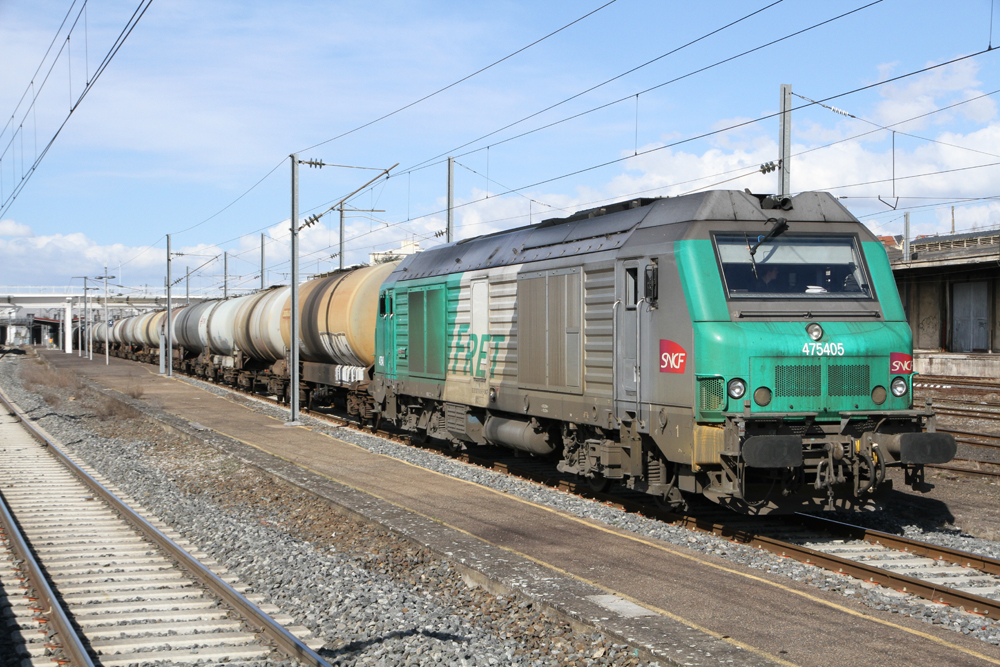Now that I'm back home from work;
We already take reefer trucks off the road via reefer containers on trains. We don't need to race goods to their destination to keep them fresh when we can maintain their freshness throughout the entire trip via reefers and a generator setup.
We put a generator, which is in the shape of a 40ft container into the railcar, and can plug up to 16 reefers to it. 8 40ft reefers on one side, and 8 on the other side of the gen.
View attachment 602250
The gen would typically be put into the bottom of the rail car. In this photo, the gen is probably "deadheading" to it's destination. Hence why no reefers plugged into it. But you can see 8 plugs on one side of it, and there are 8 pugs on the other side of the gen.
This railfan video shows an exact "gen & reefer" setup we use to move temp. sensitive goods across the country. The gen is located at the bottom of the rail car in the middle of the setup. You can see all the cables from each reefer plugged into the gen.
Time stamped for 4:19, The very end of the train.
10ft containers are not profitable and make loading trains more difficult. You would have to put 4 of them in the bottom of a railcar. Plus most railcars in N.A. are not designed for 10ft containers. I've never seen a 10ft container come through the Brampton yard. It would make more sense for the customer to just purchase a 20ft container. You can't use a forklift to get a container out of a railcar. It's physically impossible. You need a crane to do it. Which brings another point about 10ft containers. All the cranes in CN's network are not designed to handle 10ft containers. So they won't move any.
Like what? Heavy equipment? They move military tanks/ equipment on trains with special railcars.
Car thieves have shown us we can cram 2 SUV's into a single 40ft containers.
Steel cages/ frames are built around tankers to make them fit in the same railcars as containers. Both 20ft and 40ft
View attachment 602255
Also here's a crane in an intermodal yard moving a boat that wouldn't typically fit in a container. So long as the freight isn't wider than the railcar, they can move it by train.
View attachment 602256
This might come as a shock to you. But N.A. is more efficient at moving goods/ freight via rail than Europe. Larger trains, double stack containers. Europe doesn't even have 53ft containers like we do in N.A.. Hell! Canadian Tire has 60ft containers which they run across Canada by train. They built special chassis for their trucks. And urbanists wonder why our roads and overpasses in Canada are so large and not small like in Europe.
Europe have us beat when it comes to passenger rail.
For decades, the European freight rail system has had no major upgrades with regard to axle load capacity, train length or car vertical height.

www.freightwaves.com
There really is no more efficient way to move goods across the country. I've loaded containers in Edmonton, flew back to Toronto the next day, and 2 days later offloaded those same containers off the train in Brampton.
No. Getting CPKC trains off the Midtown line is the solution. Unfortunately the only way to do this is to get them to construct their own CN style "York sub" that goes around Toronto. We would also have to give them land for a new marshaling yard since they would be losing access to Lambton and Agincourt. Once constructed they would then sell the Midtown line to Metrolinx. Obviously easier said than done.
Getting CPKC to construct a freight bypass running parallel with the 413 would be the start of this massive undertaking. This new sub would continue north of Vaughan and Richmond Hill and eventually reconnect with the existing mainline somewhere north of Pickering.
View attachment 602254









